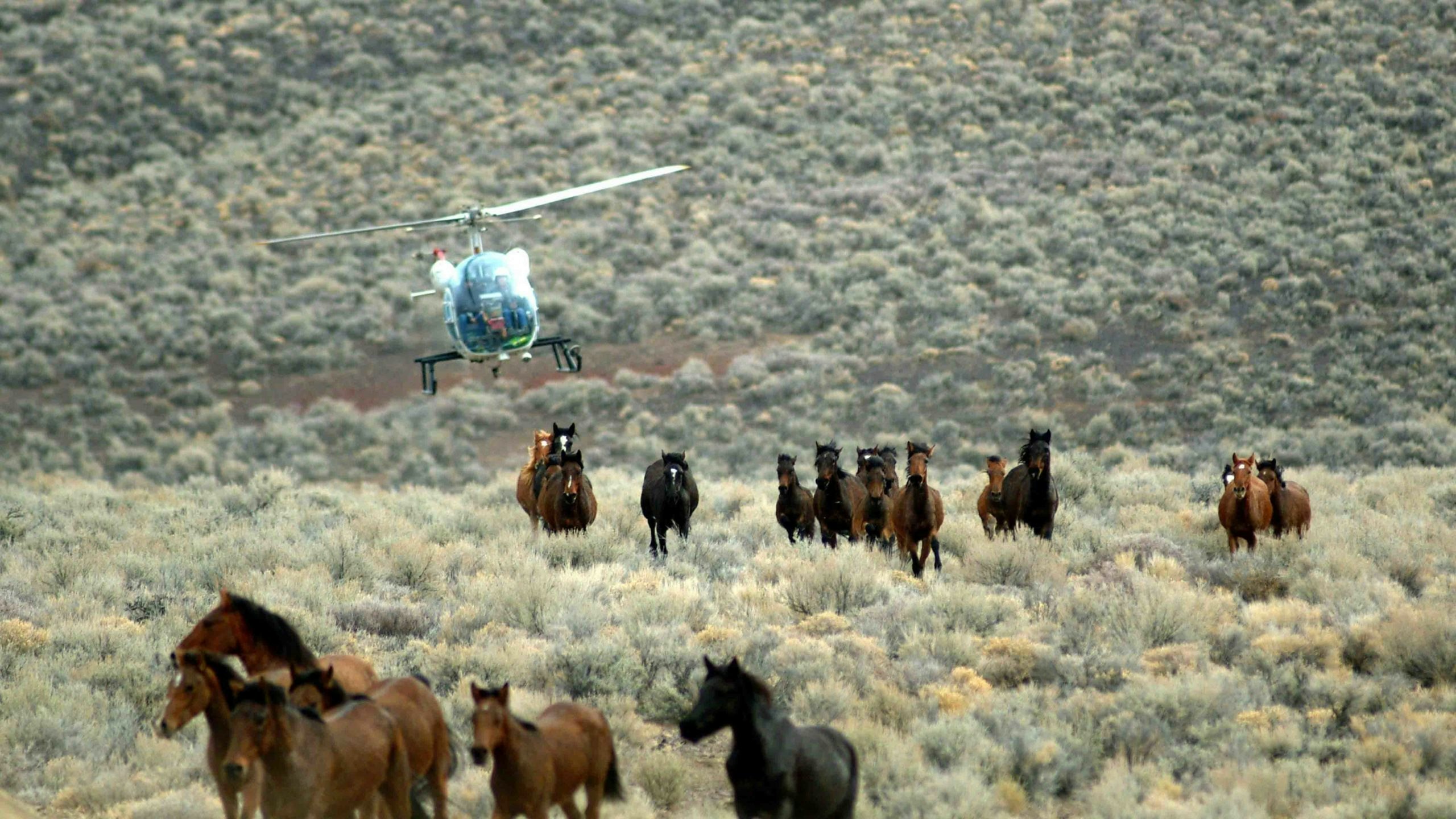To get a handle on growing herds of wild mustangs in Wyoming and across the American West, a resolution being considered by the Wyoming Legislature says Congress should re-open American horse slaughterhouses so the meat can be shipped to places where people eat it.
Slaughter is a practical and humane way to deal with excess or ailing wild and domestic horses, Lee Livingston, a Park County commissioner and outfitter, told Cowboy State Daily.
But the American Wild Horse Campaign, a mustang advocacy group, contends that horse slaughter is impractical and inhumane, said the group’s spokeswoman, Grace Kuhn.
Slaughter Stopped In 2007
House Joint Resolution 3 contends that wild horse management has been inefficient and that Wyoming and other Western states have too many mustangs, which are out-competing native wildlife and damaging habitat.
The resolution calls upon Congress to re-open American horse slaughterhouses as one way of culling the number of mustangs because there is an international market for horse meat.
“The United States Congress has effectively banned horse slaughter in the United States for human consumption since 2007 by denying funding for the inspection of equine slaughter facilities throughout the food production process,” the resolution states.
HJ 3 asks lawmakers to urge Congress to reverse that policy.

Symbolic Gesture?
The resolution is a symbolic gesture that probably won’t amount to anything, Kuhn said.
That’s because wild mustangs were put under federal jurisdiction by the Wild Horse and Burro Act of 1971, and that won’t change, she said.
The mustangs “do not belong to Wyoming,” she said. “They belong to the American public and to the public lands that they roam.”
The 1971 act put the Bureau of Land Management in charge of mustang management.
Moreover, mustangs are scapegoated for habitat damage and strain on animals such as deer and elk that is actually being caused by livestock overgrazing BLM land, Kuhn said.
Also horses aren’t good candidates for slaughter, she said.
They can suffer greatly during long transport to slaughterhouses, and their skittish nature and strong “fight or flight” instinct can make it difficult to kill them mercifully, Kuhn said.
“Horses sometimes endure multiple blows and sometimes even remain conscious during dismemberment,” she said.
A Humane Option
Livingston said slaughter is a humane option, particularly if horses could be shipped only short distances to domestic slaughterhouses.
“It is a good option for both feral and domestic horse populations,” he said. “I have had horses in my life since I can remember and consider them partners in my business, but they are livestock and slaughter of livestock has been around for thousands of years.”
Shutting down domestic slaughter had terrible unintended consequences for horses, he added.
“We are seeing horses being inhumanely kept alive because the people that own them can’t afford to have them euthanized,” he said. “We are seeing horses abandoned for the same reasons.
“When we had slaughter plants here in the U.S. the horses that were sold for that wound up spending much less time being trucked from point of sale to the processing plant.”
Where Do They Go?
Horses are now trucked to Canada or Mexico for slaughter, Livingston and Kuhn said.
Livingston said that “France was a big market” for horse meat at one time.
Kuhn said Europe takes some horse meat, and it also is eaten by people in Quebec, Canada.
Another Possible Solution
Bill Gentle, former director of Wyoming’s Department of Agriculture, raises show horses and told Cowboy State Daily that sterilizing mustang mares might be a solution to the mustang population problem.
Mares could either be spayed or shot with darts containing contraceptive drugs, he said.
“The technology for (mustang) sterilization is there, and it’s pretty good stuff,” he said.
It’s also been suggested that combat veterans armed with sterilization dart rifles could stalk and shoot mustangs in Wyoming, Nevada and other Western states.





